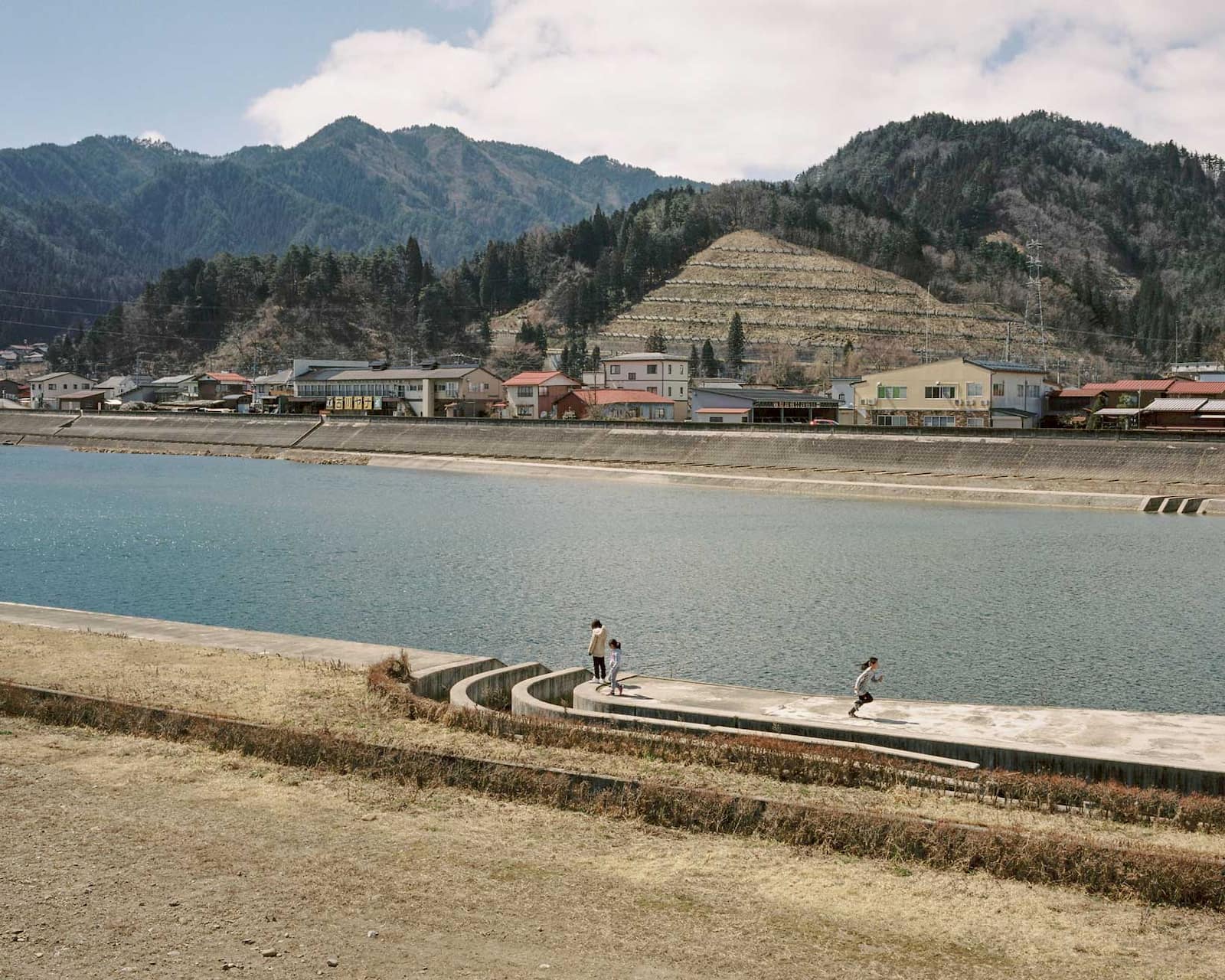
Five Movements of Mothering: How Moments of Care are Created by the Paths We Walk
Listen to this article, read by the author.
“No, I don’t like this walk; it’s horrible.” Piper is pushing a double pram along the footpath with her two daughters, Melody, 3, and Amy, 6 months.
The footpath is uneven. Pram wheels stick. Sounds of speeding cars vibrate through her body.
Piper, a 30-something mother living in an Australian suburb where cars are taken for granted in making domestic life possible, is on her way back from the supermarket laden with groceries.
Municipal authorities advocating for “healthy cities” do not wish to hear such words. The primary purpose of healthy city policies is to educate families on the health and environmental benefits of walking. Walking is a win for physical activity and a win for reducing greenhouse gas emissions. Yet, transport surveys suggest that fewer families are walking in western cities than ever before. For many, the car makes family life possible. Parents care for their children by chauffeuring them in the cocooned safety of cars.
What can we learn about parenting, cities and walking from those who counter the dominant trend and journey with their children on foot? To find out, we temporarily became part of the lives of families living in Wollongong, Australia. Here we share five moments from mothers’ accounts of walking with young children. These moments illustrate the potential of thinking about city streets as an ongoing process in part made through walking routes, rhythms, pace and styles. While walking city streets with children may create stress for mothers who must contend with speeding traffic and the expectations of strangers, it may also create space for play and togetherness. In these family lives, walking had less to do with the health or environmental benefits proposed within policy documents. Instead, what often motivated walking was how mothers felt care within the public realm.
Walking seems so natural it hardly seems worthy of consideration. You repeatedly put one foot in front of the other, yes? Yet the ways in which we experience walking are constantly changing.
In these instances, we understand care as an intensity, or atmosphere, that helps mothers understand themselves and their everyday mobility choices. Think about moments when you become aware of yourself. For example, walking into a crowded street, you may pick up the vibe; and sense if you belong, or not. The footpath, lighting, seats, trees, parked cars, traffic, numbers of people, sounds and smells all play a role in making the vibe. You might choose to wear headphones and play music, to help yourself relax and feel like you belong in the space. Here, we are interested in how walking can generate a sensed vibe or mood that makes care for children possible. When walking with children, the vibe or atmosphere that enables care helped our participants understand themselves as mothers.
Rethinking Walking
Walking seems so natural it hardly seems worthy of consideration. You repeatedly put one foot in front of the other, yes? Yet the ways in which we experience walking are constantly changing. Think about the transformation of walking along a busy footpath at peak hour when wearing heels, Wellington boots, or runners. It is not the footwear alone that accounts for the change in experience, but the embedded relationships that make the practice of walking possible.
Consequently, think of walking as performative, ever-emerging, and relational. Performative, because walking is something that we do. Beyond biomechanics, how we walk is always contingent on different sets of ideas that help inform choices of what to wear and bring along—ideas influenced by factors such as gender, class, and age alongside ideas about health, sustainability and livability. Think about how trail walking is different from power-walking.
Ever-emerging, because the achievement of walking can never be taken as fixed. Each step comes with the possibility for change in rhythm and route.
Relational, because walking is made possible through the enrollment of material things. Walking is not solely a human activity. Think about how different styles of walking are only made possible through specific footwear, clothes, paths and light; alongside bringing along ”stuff” like walking-sticks, umbrellas, waterproofs, Fitbits and mobile phones.
Learning to walk can no longer be thought as “natural.” Instead, from birth, how we learn to walk is always part of performative, ever-emerging, and relational process. Indeed, through this process, walking, like all mobilities, enable us to understand who and where we are—a place-making exercise through which we apprehend ourselves and others.
Indeed, through this process, walking, like all mobilities, enable us to understand who and where we are—a place-making exercise through which we apprehend ourselves and others.
The beach side city of Wollongong is 80 kilometres south of Sydney, on the eastern Australian coast. Suburban car ownership is extensive and investment in public transportation lacking. Between 2015-2018, to better understand the experience of parents and children travelling on foot in Wollongong, we followed the everyday lives of sixteen families, all highly educated but socio-economically and ethnically diverse, with children under the age of 15. The project involved successive rounds of interviews, joining participants on their usual walks, and having participants review videos they recorded of different walks over a few weeks. Parenting in Australia is still highly configured by gender. Women continue to be positioned as the naturalized primary careers of children. Amongst our participants mothers, rather than fathers, continued to accompany children on most journeys.
What was told to us by participants in part reflects our experiences as Wollongong residents that regularly journey on foot through the city. Reflected in the questions we asked is our lack of experience as parents, the moments that caught our attention and what we share here. Not knowing what it is like to walk with a child in tow meant we often sought clarification around details shared with us. Consequently, families told us intimate details about their everyday lives.
We acknowledge that these moments speak to experiences of family mobility from just some families, living in just one city. We do not claim that their experiences are universal or representative of walking for all families in Australian cities. However, these moments open up questions about how motherhood and families are shaped through walking. They provide important insights into commonly experienced moments of tension and joy that work to shape familial mobility on foot.
Preparedness
For some mothers, walking with young children only becomes possible through carrying a whole list of baby-related items in prams and backpacks. Wipes, nappies, drinks, food, clothes, and sunblock were essential items regularly listed during our conversations with mothers.
“That’s the baby backpack,” Piper tells us. “So, it’s got nappies and wipes and maybe some food … after music class we go to the park and we hang out, and I don’t know if Amy’s going to do a poo or something.”
Our participants’ stories suggest they live in a city where the slower pace of mothers with children, walking on narrow sidewalks, positions them as a problem.
Piper is aware of public expectations that require mothers to be prepared for any eventuality. Thus, the backpack helps alleviate anxieties of appearing incompetent as a mother when out and about in public. The things she brings along help her to relax. Piper illustrates the performance of motherhood by packing and carrying such items. In doing so, Piper can live up to taken-for-granted ideas of mothers as prepared for any eventuality.
“My baby backpack’s ready to go, so if I do use something I replace it straightaway,” says Bella, a woman in her early 30s, and mother of 3-year-old Lachlan. “There are always a set of keys on the pram,” she tells us. “I always take food, water for him and because this walk was longer I took a backpack with a change of clothes for him as well … And because we knew it was going to be windy I think I even brought his beanie and jumper.”
Bella consciously replaces used items in her baby backpack. The act of replenishing can be thought of as a way of performing care. But, more than this, Bella’s understanding of herself as a mother emerges from how care manifests through the material items that she brings along to make the walk possible. For Bella, an enjoyable walk is contingent upon her carefully planning for the presence of the pram, keys, food, water, and change of clothes.
The encumbered urban mother, while prepared for any eventuality, is also aware of how her pram or backpack positions her in relation to others on the street. The backpack and pram fix the identities of these pedestrians as moms. Taking up more space on the footpath, moms are often seen as either a nuisance, or invisible. Alicia, a mother of two in her early 50s, explains: “With a stroller we are a substantial obstacle … People just get out of our way, we’re pretty loud and obvious I guess.” Our participants’ stories suggest they live in a city where the slower pace of mothers with children, walking on narrow sidewalks, positions them as a problem.
Watchfulness
Driving culture shapes everyday mobility in Australia, prioritising freedom, speed, convenience, and comfort. These values are taken for granted, without considering the possible effects on parents walking with children. Proximity of speeding cars featured in our conversations about walking with families. Rachel, in her late 30s, married and a mother of two children under 6, tells us that it is often safer for her to drive short distances than to walk along main roads: “We’ll drive down to the shops…we could walk down the hill, that’s not a problem, it’s still not the safest walk.” From the perspective of a driver, streets are designed for speed, flow, efficiency, and productivity, in order to facilitate the logics of capitalism. From the perspective of the parent, these same streets are a stressful and unpleasant source of anxiety.
Rachel apologizes to us for shouting at her son for running ahead on the footpath. She is reviewing a video of a walk with her 5-year-old son, Mike, at the shops near their house in Woonona, a northern suburb of Wollongong. It is a Thursday afternoon in the video, and mother and son are walking together along the pavement, with moving cars close by. “My son is a runner,” she tells us, “and he always has been, so it’s always… When you hear my recording of us walking, it’s probably me yelling at him because he just takes off, so it’s always quite stressful. It’s not a pleasant thing and that’s why, I think, that’s my habit of… I didn’t want to go for a walk because it was just too stressful for me.” The flow of city traffic does not accommodate the unpredictable rhythms of her son’s stride.
Walking is not sustainable in a city where transport planning values speed above all else.
Like Rachel, Mayra, who is in her early 30s, explains, “Yeah, I’m always worried, that’s why I all the time use the pram; just to keep her [Aiyana] close.” Mayra uses the pram to keep her 4-year-old daughter safe while the risks from the unpredictable movement of young bodies in proximity to cars. The pram is an important tool for Mayra, who is a sole parent for her daughter whilst her husband works overseas in their home country of Bangladesh. But if the pram is keeping Aiyana safe from cars, she is not getting the health benefits of walking. For Mayra and her family, walking is not sustainable in a city where transport planning values speed above all else.
Playfulness
When transport engineers design footpaths, they often imagine the pedestrian commuter moving at a brisk power-walking pace on the way from one place to another. We found, however, that children repurposed footpaths to create playful spaces using their imaginations. The footpath becomes a site to learn about different rhythms of bodily movement through play.
These moments illustrate the potential of thinking about city streets as an ongoing process in part made through walking routes, rhythms, pace and styles.
Ethan, 3, and his sister Jacky, 6, are walking along Crown Street, in the centre of Wollongong, with their mother Alicia, who is in her early fifties. Reviewing their video-recording with Alicia, we see Jackie pushing an empty stroller along the footpath.
“Mum, I can do a big jump!” The rhythm of the walk is broken when Ethan pauses and jumps as far as he can. He cannot hide the joy. “Ehhh!” he squeals.
“Great!” praises Alicia.
Jacky smiles at her mother. “I can do a bigger jump!” Jacky pauses, runs and jumps.
The jumping becomes marked by sibling rivalry. “I can do a bigger jump!” says Ethan. Ethan prepares for an even bigger jump, running ahead towards a road intersection.
Alicia chases after him. “Stop Ethan, stop! This is busy street, you walk next to me or you hold my hand!… It’s not safe!”
Ethan stops in his tracks. “I want to jump!” he whimpers, and starts to cry.
Alicia tries to comfort him. “What’s wrong?” she asks, putting her arms around him.
Jacky smiles. “He wants to jump.”
The playful moment ends in tears. The traffic movement and sounds are more than a backdrop; they are an ever-present danger, and Alicia always must be vigilant.
Togetherness
Walking generates possibilities for family time and affirms family relationships. These walks are not comprised of rhythmic strides but ambles. The slow pace is arrhythmic, broken up by chance encounters. A bird. A leaf. A stick. A feather. A friend, then a neighbour. In these walks, done on long summer evenings, weekends and school holidays, it is not about distance or heart rates. Instead, the slow pace helps to configure a sense of family relationships by creating a departure from everyday work routines.
Marge is in her early 40s, of Anglo-Australian ancestry, and works part-time in the education sector. She is married to Jack, and they have two children Tim, 5, and Belle, 7. On summer evenings, she sometimes takes a walk with her husband, son and daughter. In the video that she reviews for us, it is a mild evening in spring, and daylight savings have just come into effect, making the days feel longer. The sun is setting behind the Illawarra escarpment. The clouds are back lit bright pink. Cockatoos screech as they circle overhead. Marge is ambling along the footpath with her husband. The cloud colour captures Tim’s attention. Belle listens to the squeal of the cockatoos. Reflecting on the video Marge said, “We like to have time outside, when Jack has been at work all day. Sometimes it just breaks up the evening routine a bit, you know, like doing all the dishes and then getting them ready for bed.” Ambling helps tired bodies to relax, configure an appreciation of the neighbourhood, make connections with the outdoors, and create family time within hectic work schedules.
Attentiveness
Walking generates moments to talk and listen. These moments offer opportunity to build familial roles, relationships, and responsibilities through how care is practiced and felt. Slow side-by-side walks offered unique possibilities for parents to talk with children one-on-one. The relaxed pace of familiar walks, away from sibling eavesdroppers, allows families to share intimate stories and approach sensitive topics.
Around 7pm each evening, Billie walks with the family’s two dogs from their house to a nearby beach. Billie is aged in her late forties with Anglo-Australian ancestry. Billie is time-poor. She is a full-time university student and married mother with three children. Usually, her eldest child, Ellie, 11, accompanies Billie. This walk together provides an opportunity for Ellie to raise concerns about the family’s upcoming relocation to Adelaide. Specifically, Ellie is anxious about the euthaniziation of the family’s pet chickens. Billie described how the slow-paced routine walk created what she termed a “teachable moment.” The regular rhythms of walking and talking each evening enable Billie to prioritize her daughter within her busy schedule.
“I try to listen,” she says, “because it’s important to. Sometimes I’m not as attentive enough as I should be. But the walk is an attentive interaction in between us, because I’m sure you’ve heard in the audio at times that the interactions at times aren’t quite positive. So, having her actually walk with me is important in terms of our relationship.”
Billie is mindful on these evening walks, listening to her daughter and learning her perspectives. Listening, Billie can enact care. The routine walk generates a moment in which to hear her daughter’s voice. The rhythms of this regular walk affirm the mother-daughter relationship.
Mothers’ perspectives of walking with young children highlights that their slow, arrhythmic pace does not align with street planning, disrupting the anticipated rhythms of the city.
Not that these walks with children should be romanticized—they are also moments where limits are tested. Those who walk regularly with children know that becoming a parent often shifts between feeling of care and frustration. Patience is lost. Voices are raised. Our participants were no different.
It is late on Saturday afternoon in the spring. Billie and Ellie have taken the dogs with them on a walk to the beach. Ellie has carried her Spooner board (a board use to slide down sand dunes on) to play with. Billie carries towels, keys, a tennis ball to throw to the dogs, and plastic bags for picking up after their dog’s bowel movements.
The sun begins to dip lower and the onshore winds pick up. It is time to walk home. Billie and Ellie argue while preparing for the walk back. Ellie is tired and wet after her swim. The sea breeze is chilling. The Spooner board is now a burden rather than a bonus. A standoff emerges. “You carry dog poo, that’s the alternative!”, says Billie. “You pick it up or you carry the dog poo.”
Ellie shakes her head. “You’re the only one who’s dry, you carry it, I am not carrying something when I am numb!”
Pointing at the Spooner board, Billie raises her voice, “You’re not going to get any less numb if you can’t pick that up, so we can get home! Just pick it up!” The Spooner board makes a problem for Billie and Ellie in terms of walking. In this intense moment we sense Billie’s anxieties of the prospect of being encumbered with this board, in addition to walking with the dogs, towels, keys, wet tennis ball, and carrying both of their shoes up the beach. Billie expresses unease about the way carrying the board positioned her in relation to Ellie. In this instance, Billie uses the Spooner board strategically to demarcate mutual responsibilities and her limits: the emotional demands of caring for a young daughter do not extend to carrying this toy on the return walk home.
Step-by-Step
The mothers in our project shared insights about their anxieties and joys as they walked with their children. Their experiences offer possibilities to reflect upon the ways that such walks, and the things one brings along, can offer insights to how different styles of walking shape our understanding of parenting, families, time, and place.
The design of streets in many western cities are for speed, efficiency, and productivity. Motor vehicles have priority. Likewise, the assumption is that walkers are fast-paced, stepping out to predictable rhythms. Mothers’ perspectives of walking with young children highlights that their slow, arrhythmic pace does not align with street planning, disrupting the anticipated rhythms of the city. Consequently, walking with a child may become a source of anxiety, particularly when pushing a pram, carrying a heavy baby backpack, or controlling the unpredictable movement of children. However, walking slowly with young children generates “time out” to foster parent-child bonds, opportunities to forge connections with the outdoors, and create understanding of the responsibilities that make a family.
The promotion of healthy and sustainable cities has never been more important. These mothers’ narratives point to how policies designed to encourage walking for health, or the planet, often overlook everyday mobility rhythms. We argue that the intersection of these different rhythms help comprise not only understandings of ourselves, but our relationship with others. Do we want to continue to prioritize a culture of speed in our cities, giving preference to cars or power-walking commuters? Or, do we want to facilitate a slower pace that facilitates possibilities for care that sustain familial relationships through moments of playfulness, connectedness, and togetherness?
__
The original article written by Drs. Clement and Waitt on which this piece is based can be read here
Dr. Susannah Clement is a Human Geographer whose research interests are inspired by feminist thought and the gendered politics of everyday family life. Susannah has published in the peer reviewed journals Gender, Place and Culture and Children’s Geographies. She is an Honorary Associate Fellow with the Australian Centre for Culture, Environment, Society and Space, University of Wollongong.
Dr. Gordon Waitt is a Professor at the University of Wollongong where he is the Head of the School of Geography and Sustainable Communities. His work has focused on questions of identity and embodiment in terms of sexuality, gender, household sustainability and now domestic energy consumption.
Jordan Madge is a photographer from Melbourne, Australia. Primarily adopting the role of observer, he aims at exploring social and physical landscapes. In 2015 he graduated with a BA of Photography at Photography Studies College Melbourne. He has been featured in publications such as The British Journal of Photography, VICE, Landscape Stories and Paper-Journal Magazine.
Txema Salvans strives to find a unique personal voice in his work, crediting his studies in biology with enabling him to represent the things of this world that he understands. He focuses on taking pictures of his own culture, people and landscapes, taking inspiration from a physical connection with the landscapes that surround him and an emotional connection with his people. Consequently, his latest project (20 years in the making) has consisted of taking photos all along the Spanish Mediterranean Coast, documenting how people spend their free time. At the same time, he has an active career shooting for magazines, newspapers and advertising agencies as well as his own personal projects including five books: Nice to Meet You, My Kingdom, The Waiting Game 1 , The Waiting Game2 and Perfect Day which can be found here.
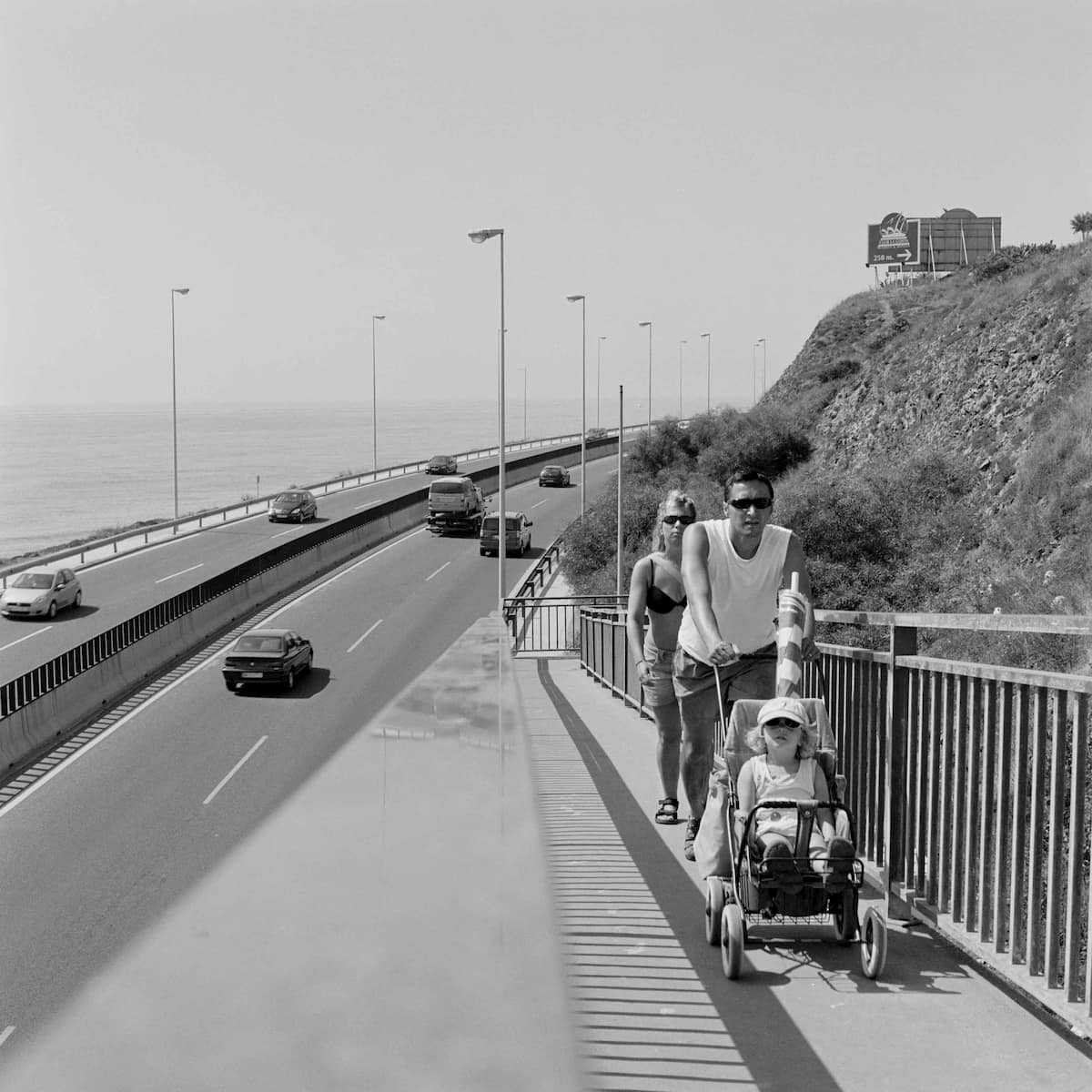
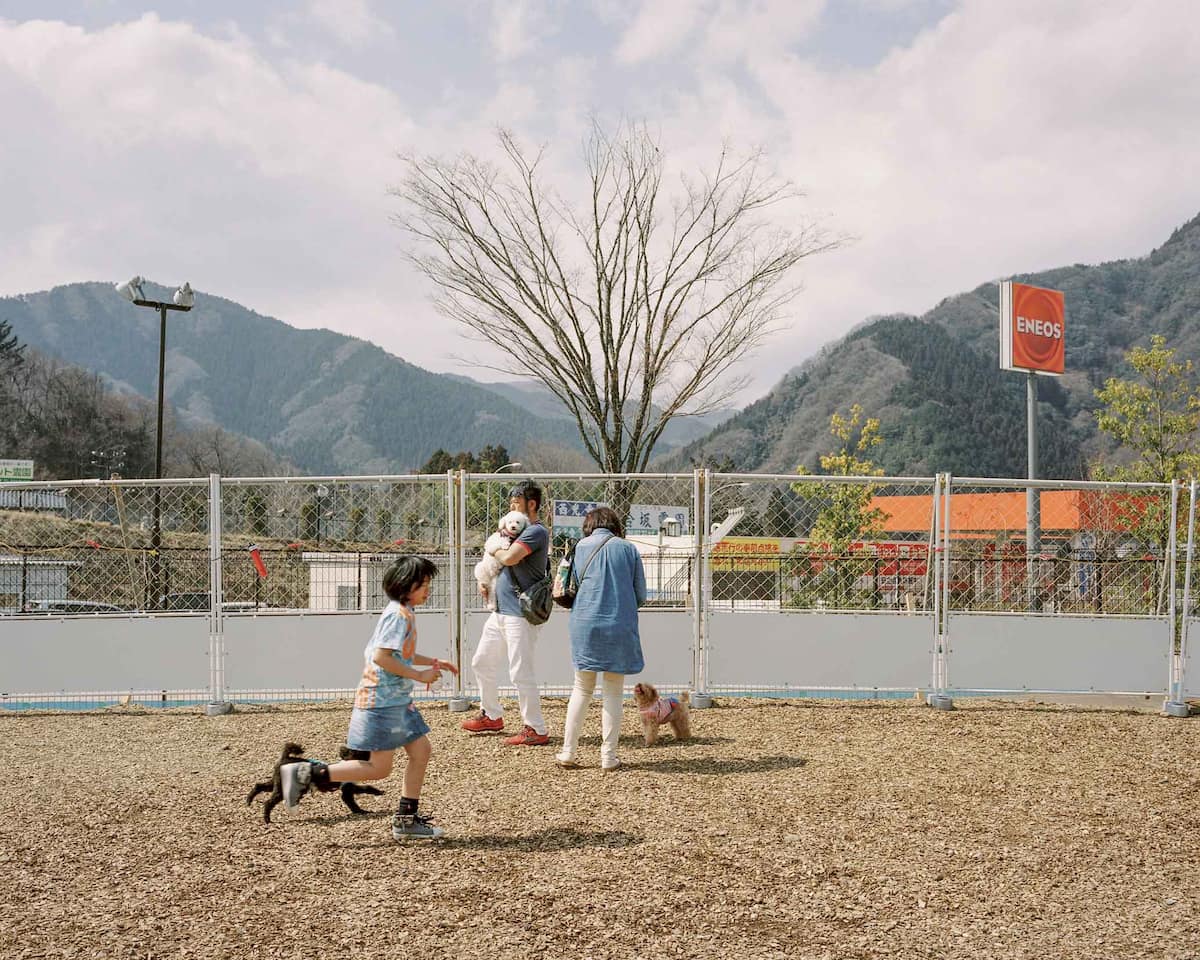
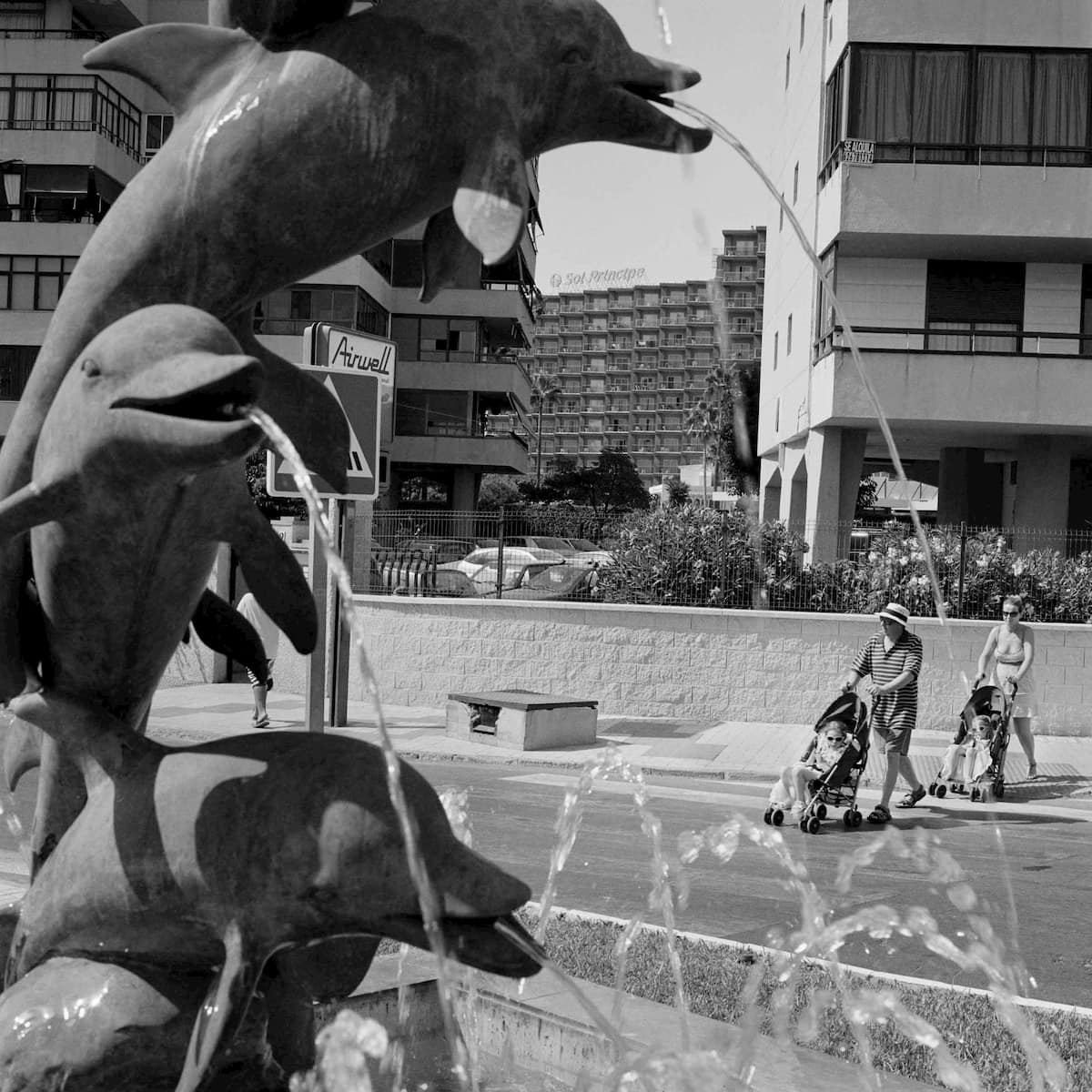
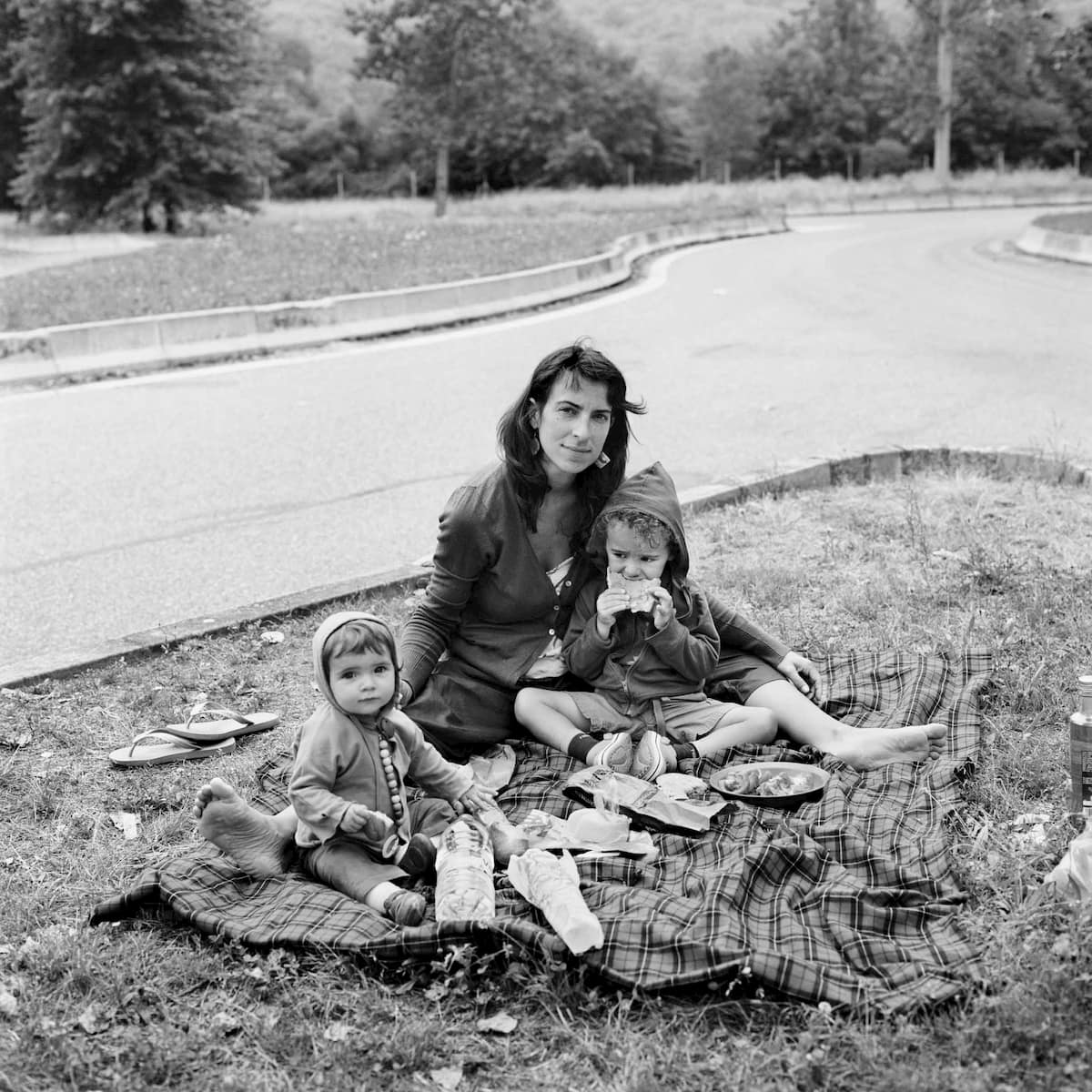
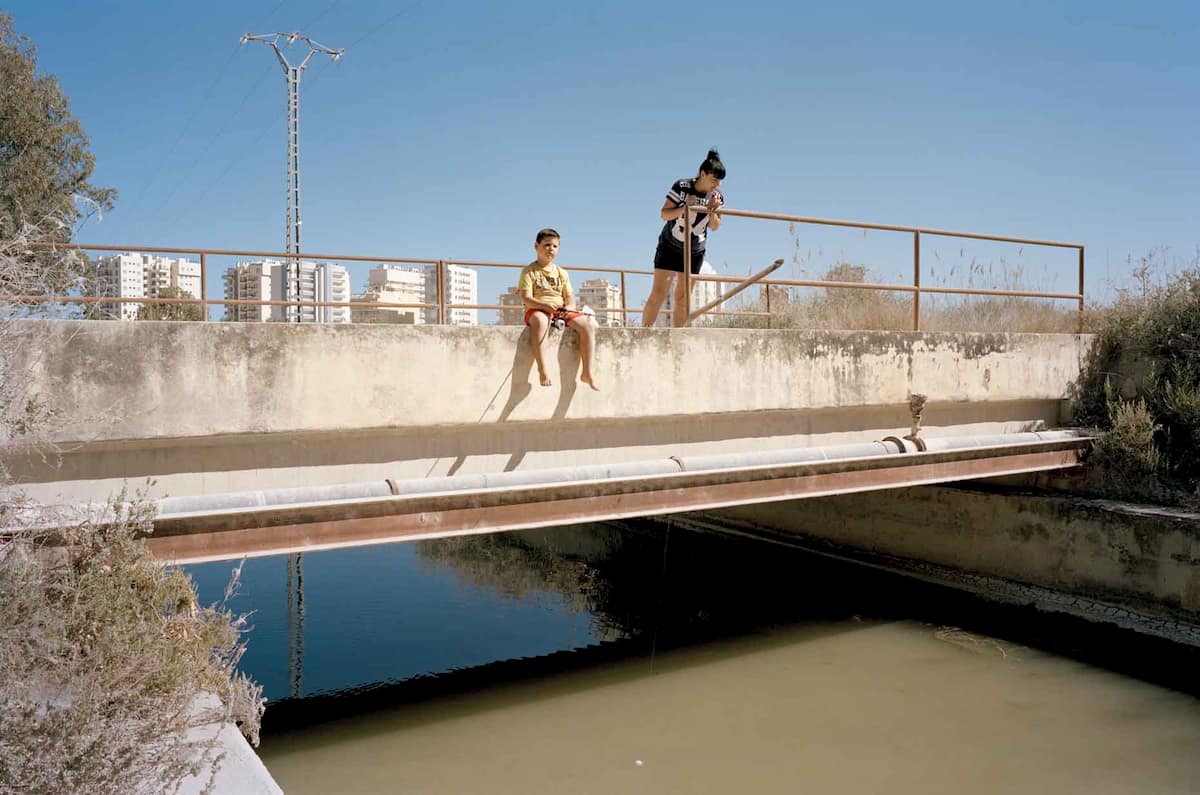
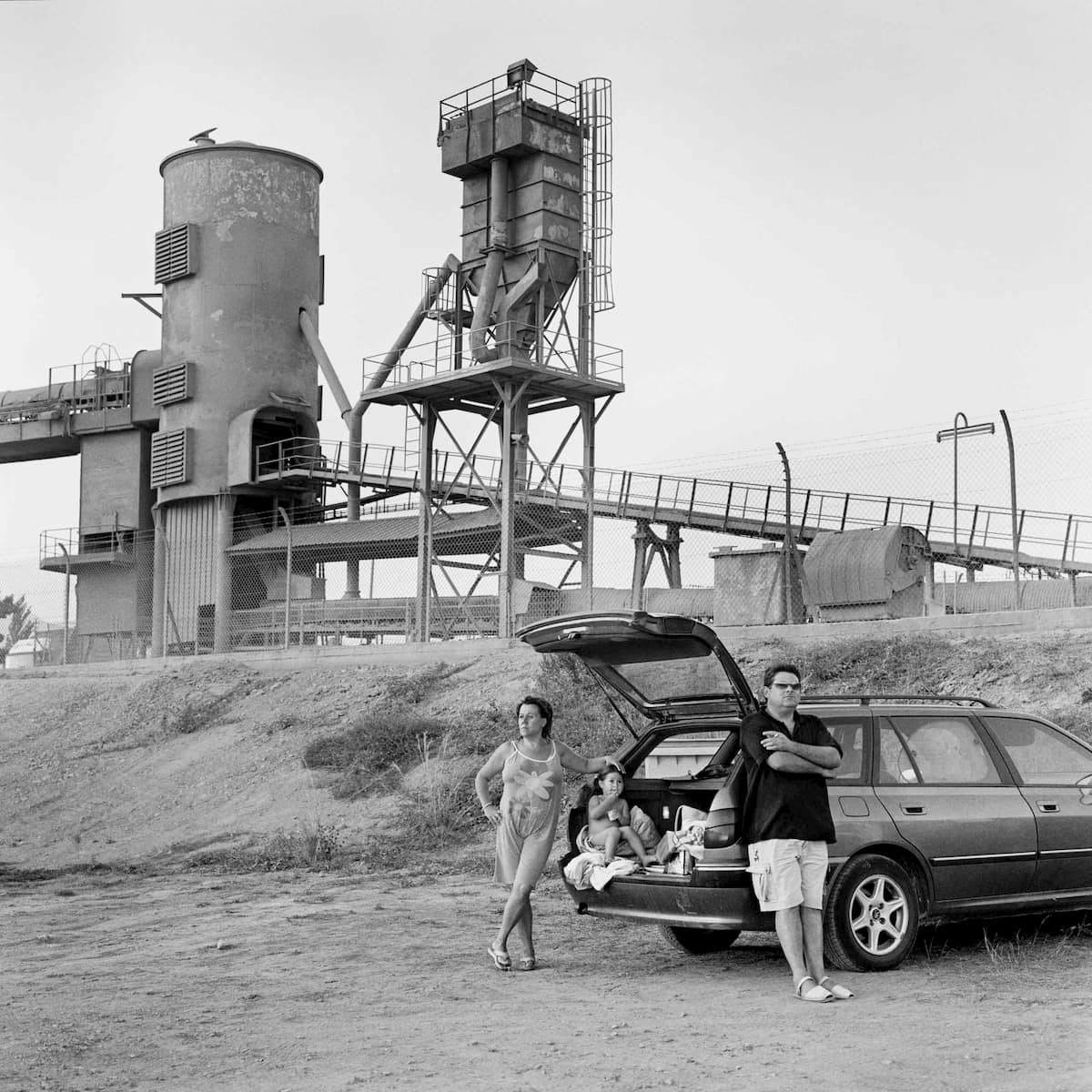
I really appreciate the idea that walking is ‘perfomative’ – something that I haven’t had the luxury of considering before.
Cities throughout the world are geared around vehicles – and even in older cities, pavements are often too narrow for strollers (especailly those one with multiple ‘chairs’ side by side).
We need to rethink our city design, to place health and mental health at the forefront (perhaps even radically moving away from GDP to Gross Domestic Happiness as a measure of progress). We need space for people of all ages and life stages to walk free from the fear of busy intersections or roadways – not to mention the fumes etc.
We’ll see what comes in that regard – but I hope that we reach a space where there might be more ambling and rambling, promoting humanity / connection above the logic of capital.
Agreed, Neil. Thanks so much for your thoughts on this :).